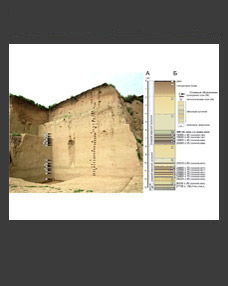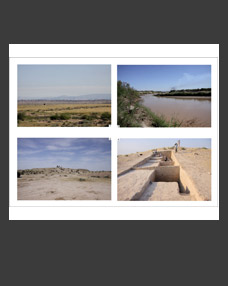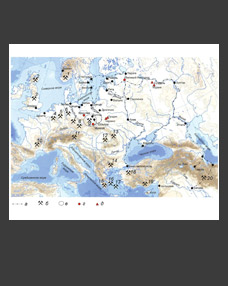Alexey N. Voroshilov#, Olga M. Voroshilova##
Institute of Archaeology RAS, Moscow, Russia
#E-mail: voroshilov.aleksej@yandex.ru
##E-mail: helga-mir@yandex.ru
Keywords: archaeology of the Syrian-Palestinian region, Jericho, late Byzantine/Umayyad period, industrial complex, pottery workshop, iron smelting, bloomery furnace, slag, bloom.
Excavations in Jericho made it possible to reveal a notable complex of ferrous metallurgy. Archaeological evidence of iron smelting is represented by numerous slags, dozens of iron blooms, and three bloomery furnaces. They are localized mainly in the cultural layer surrounding the pottery kilns. The statistics of the finds indicate a fairly active production of iron in the Jericho workshop, where 59 small iron blooms and their fragments were found. The shape of whole blooms corresponds to a bowl-shaped depression in the lower part of small bloomery furnaces. The foundations of three similar structures were found, each of them located in the immediate vicinity of a pottery kiln. The chronology of iron production in Jericho corresponds to the time of functioning of the pottery workshop at the monastic-pilgrimage complex of the second half of the 6th – the first half of the 8th century. The archaeological context proves that ferrous metallurgy was an integral part of the production processes in the workshop throughout the entire period of its functioning. In addition, the multifunctionality of the production complex in Jericho is confirmed, which most likely provided for the vital needs of the inhabitants of a fairly large household in various types of ceramic vessels and bloomery iron throughout the late Byzantine and Umayyad periods of Palestine history.
DOI: 10.31857/S0869606323020198, EDN: RGUZQC







